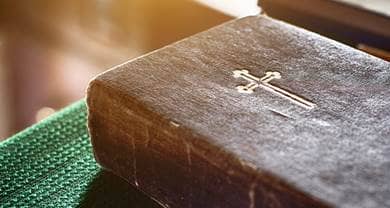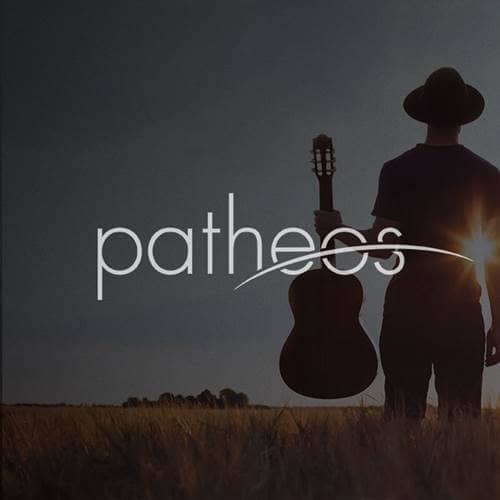- Trending:
- Easter
- |
- Lent
- |
- Forgiveness
- |
- Resurrection
- |
- Joy
- |
- Feminism

RELIGION LIBRARY
Protestantism
Symbolism
The most common symbol for Protestant churches of every variety is the cross. Most Protestant churches have a cross in the front of the sanctuary. For Protestants, the cross symbolizes the centrality of the life, death, and resurrection of Jesus Christ as the fullest revelation of God to humanity. Most Protestant crosses are not crucifixes; that is, they do not have the body of Jesus portrayed. They are empty crosses, emphasizing the resurrection and the completed work of Christ.
Other than the cross, Protestant churches have a wide spectrum of artistic representation. Some, like many Lutheran and Anglican churches, have more similarities to Roman Catholic churches because they developed historically with a more relaxed attitude toward Roman Catholic symbolism. Queen Elizabeth I's "settlement" created a via media, a middle way between Calvinist theology and Catholic forms, thus leaving intact some of the outward signs and expressions of faith and worship. Luther's principle that only those practices forbidden by scripture had to be changed led Lutherans to hold on to more of the traditional Catholic practice and aesthetics than other reformers. Thus these churches may have artistic representations of great heroes of the faith or scenes from scripture in stained glass, bas-reliefs, tapestries, etc.
Zwingli, however, made every effort to model worship on the practices of the early Church as found in the Bible, and thus tried to abolish any practice not prescribed by scripture. The result for symbolism in Reformed churches has been significant. Reformed Churches are far more likely to be stripped bare. There are few, if any, images or statues. Typically, Reformed sanctuaries have a simple bare cross and any decorations often take the form of simple geometrical patterns.
Luther did not discontinue the wearing of vestments by clergy. In fact, he himself often wore his monk's robes to worship. In Calvin's Geneva, however, clergy adopted the practice of wearing black robes rather than vestments. These robes were associated with university professors, a "secular" calling, rather than with Roman priests. At stake was what the clothes symbolized. The Reformed church believed that the vestments carried over the idea that priests were a special class of Christians, against the Protestant principle of the priesthood of all believers. Reformed ministers in particular prided themselves on being scholars. (Many Protestant denominations still require their ministers to study Greek and Hebrew so that they can read the Bible in its original languages.)
Marie Dentière, a well-known advocate of Reform in France and wife of a prominent Reformed preacher near Geneva, once criticized Calvin for wearing academic robes, pointing out that if he took the priesthood of all believers with complete seriousness he would adopt more common street clothes for preaching. This line of thought persisted, so that today, few Protestant ministers other than Anglicans or Lutherans wear any kind of special robe; some wear dress clothes (suits/ties; or dresses, if women are accepted as leaders), while others dress very casually.
Protestant churches that follow the liturgical seasons accent the sanctuary with colors associated with each season. The communion table and pulpit will often be dressed in violet for Advent, Lent, and Monday, Tuesday, and Wednesday of Holy Week. White is used for Christmas Eve and Christmastide, Epiphany, Maundy Thursday, Eastertide, and Trinity Sunday. Red is used for Good Friday and Pentecost. Green is used for the Sundays after Pentecost.
Methodist, Baptist, and Pentecostal churches also tend to be fairly austere, for several reasons. All have their origins in revival movements, which tended to attract less established and wealthy classes of society. They were well suited to rural and frontier churches in North America. They thus tended to have plain worship spaces for economic as well as theological reasons. While the demography and economic status have changed, the tradition held.
Protestant churches are often decorated with images or patterns. Often these images depict the Trinity, employing such forms as three circles or trefoils. The Holy Spirit is often depicted by a dove. It is also common in Protestant churches to see stylized depictions of a book, symbolizing scripture and representing the centrality of the Bible. In other words, the symbols of Protestant churches are used to highlight the promises of the Gospel, usually offered in oral or written form.
Study Questions:
1. How did scripture serve as a symbol within the Protestant tradition?
2. What symbols are most meaningful to Protestant denominations? Why?
3. Why is the cross used most often within the Protestant Church architecture?










